

Found in the Mediterranean, on the Atlantic coast of France, Spain and Portugal, and in the Canary Islands. This pretty purple nudibranch grows to 5 cm long and feeds on hydroids. Not just any hydroids but only those in the Eudendrium genus like the ones in the photo.
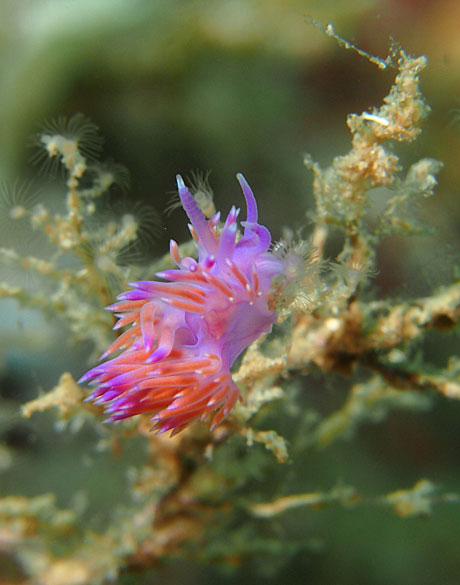
Hydroids capture and eat plankton, and the nudibranchs prefer to feed when the hydroids have just captured their prey. This means they get energy both from the hydroid and from their newly captured meal. This could have the result that they need to eat less hydroids to survive, so the hydroid colony lives longer and thus provides more food for the nudibranch.
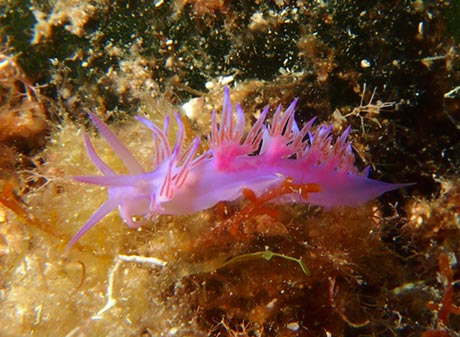
Hydroids have stinging cells. When they fire these nematocysts they should harm the nudibranch. How does F. affinis live and feed on the hydroids without any apparent discomfort? They releases masses of chitin granules which surround the stinging nematocysts and defend the animal from the hydroids tentacles.
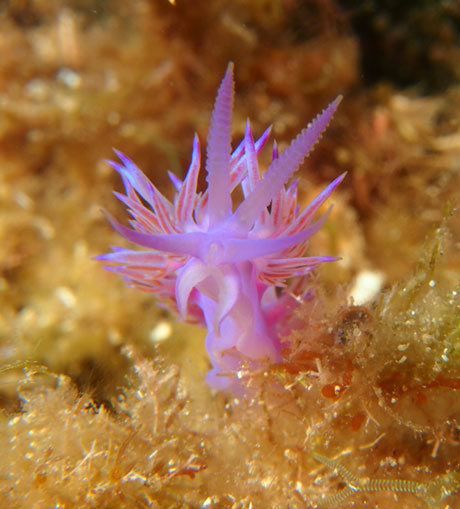
The nudibranchs take things a stage further. They can incorporate unfired nematocysts into the projections along their skin (called cerata), protecting the nudibranch against predators. An extension of the nudibranch's digestive system, the animals store the nematocysts in sacs at the cerata tips. When irritated or threatened, the Flabellina will curl its body and when in contact with a predator, specialised muscles will squeeze the nematocysts out of the cnidosacs.
These colourful outgrowths also make a big surface area for gas exchange in respiration.
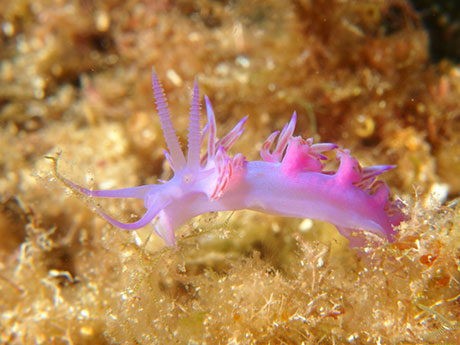
If you look closely at the photo above, you can see the nudibranch's eye - the black dot below the rhinophores (the sticky-up tentacles with a corkscrew pattern). They can't see very well though, just discerning light and dark.
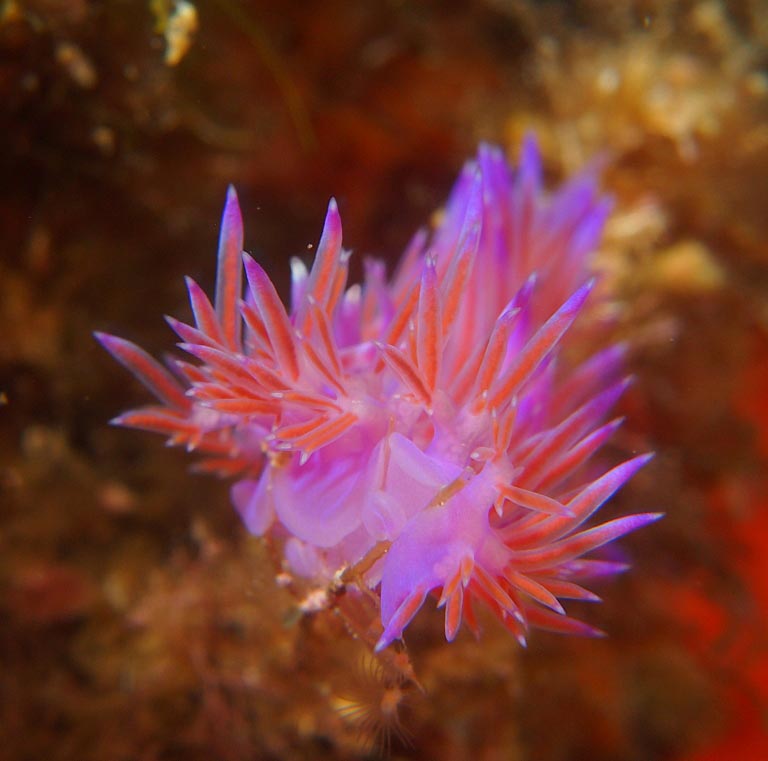
You can tell Flabellina affinis from other nudibranchs by the colour of its cerata. They have white tips and a violet band just below the tips which is opaque.

Animalia (Kingdom) > Mollusca (Phylum) > Gastropoda (Class) > Heterobranchia (Subclass) > Nudibranchia (Order) > Flabellinidae (Family) > Flabellina (Genus)
References and Further Reading
Trevor J. Willis et al. Kleptopredation: a mechanism to facilitate planktivory in a benthic mollusc. 13 Biol. Lett. 2017
Sea Slug Forum, Flabellina affinis
DAVISINVERTEBRATES
Photos copyright Tim Nicholson and Jill Studholme.
Read more Creatures of the Month.